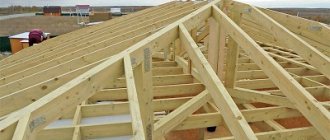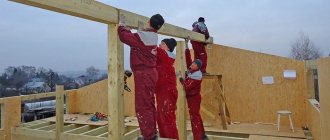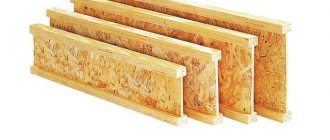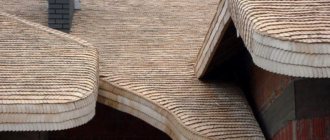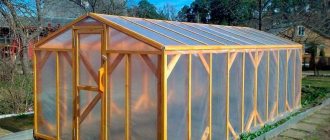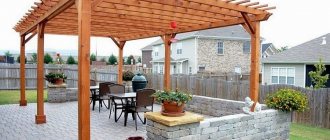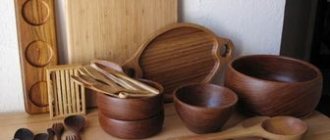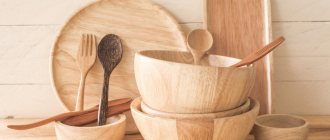A wooden house today is very popular among numerous developers. And this is despite the fact that the cost of such buildings can far exceed the price of a house made of modern materials, and comparison of advantages is not always on the side of wooden buildings. One of the disadvantages is that wooden houses naturally shrink, and this increases the overall time for construction work. The fact is that some architectural structures can only be built on stable load-bearing supports, and facade walls made of timber change their size for about a year, this rule also applies to the roof.
roofs of a wooden house
The list of its structural elements depends on the type of rafter system. What rafter systems are recommended for a wooden house?
Rafter systems for a wooden house
Wooden houses are rarely large in size and number of floors. Another feature of such buildings is that they constantly slightly change linear parameters due to fluctuations in the moisture content of the lumber. As a result, increased reliability requirements are imposed on rafter systems; they must compensate for possible fluctuations.
The more complex the roof, the more additional elements it has, and this together reduces its strength and reliability. Conclusion - it is not recommended to choose complex multi-pitched roofs for wooden houses.
| Type of rafter system for a wooden house | Performance characteristics and technical parameters |
Single-pitch | It occurs very rarely and only in small-sized houses. The only noteworthy advantage is the simplicity of the design. But not everything is so simple. The area of a pitched roof is always much larger than the area of one of the slopes, and the angle of inclination is smaller. This means that the loads on the elements of the truss system of a pitched roof significantly exceed the loads on the slopes of a gable or hip roof. As a result, to make a rafter system you need to take stronger and more expensive lumber, but often this is not enough; to increase the strength of such a roof, you need to install additional stops or purlins. The more roof elements, the more complex it is, regardless of name and type, the only advantage disappears. |
Gable simple | The most commonly used roof design option for wooden houses. In all respects, the traditional roof structure of wooden buildings occupies one of the leading positions. |
Gable broken line | The technical structure is somewhat more complicated than an ordinary gable. The advantage is that the size of the attic space increases. Often this design is used for attic spaces. |
Four-slope | A complex roof structure, used on houses with large foundation areas. It has several varieties, but they are used only on exclusive individual complex projects. It is impossible to build such rafter systems on your own; you need to make accurate calculations and have extensive practical experience in performing such work. It is advisable to trust such roofs to professional construction companies. |
The simplest rafter system design has a roof with one slope, which is inclined at an angle from 14 to 26 °
Design features of a hipped roof
All types of roofs can be warm or cold. Let us consider in more detail what individual elements the roof structure consists of.
What is better - logs, beams or boards?
The rafter system must be strong, but not heavy. Of course, for the load-bearing foundation of the roof of large industrial buildings and high-rise buildings, you have to use metal or reinforced concrete. But for ordinary private houses this is an unnecessary excess. In this case, the rafters are made of wood - from boards, timber (regular or glued), logs.
Logs are rarely used, exclusively for log houses. This material is too heavy, requiring high professionalism from the carpenter and the ability to make complex cuts in the fastening areas.
Timber is the best option from which you can mount strong and durable rafters. The only drawback of the timber is the high price.
Cheaper boards with a minimum thickness of 40-60 mm are often used as a replacement for timber. The list of their advantages also includes low weight, ease of installation and a high margin of safety.
The following requirements apply to the selected lumber:
- The minimum acceptable types of wood are 1-3. The presence of knots is allowed in small quantities (it is better to do without them at all!), no more than three knots, up to 3 cm high, per 3 m.p. Cracks are also acceptable, but they should not penetrate right through the wood, and their length cannot exceed half the length of the material.
- It is allowed to use dried wood with a moisture content of up to 18-22%. If these indicators are higher, the rafters, as they dry, may crack or bend and lose their shape.
- The load-bearing parts of the rafter system are made of material with a thickness of 5 cm and a width of 10-15 cm.
- The length of elements made of coniferous species is up to 6.5 m, and of hardwood – up to 4.5 m.
- All wooden parts of the rafters, before use, must be treated with protective compounds to prevent them from rotting, fire and damage by wood-boring insects.
General requirements for rafter systems
The roof of any house, regardless of its structural features, must meet the requirements of building codes and regulations.
Resistance to permanent and temporary loads
During the design of the structure, the existing snow and wind loads in the regions, the weight of roofing materials, diagrams of the distribution of forces among the nodes, etc. are taken into account. In this case, architects must use a safety factor; for the roofs of wooden houses it is set at least 1.4. This is due to the fact that not all materials can meet the calculated strength indicators, certain deviations from the technology are possible, etc. In addition, wooden houses have fluctuations in linear dimensions, the rafter structure must compensate for them by increasing stability.
Load on the rafter system
Minimum possible weight
The less the load on the foundation, the more reliable the structure. The roof on a wooden house must withstand dynamic and static forces and at the same time have a minimum weight. During the calculation of the structure, the optimal cross-section of the load-bearing elements is determined. In order to reduce weight, the cross-section of the rafter legs can be reduced (it is they that mainly affect the weight of the structure) due to the installation of various stops and spacers. Reducing the weight of the roof structure simultaneously leads to a decrease in its estimated cost.
Lumber quality
For the manufacture of the roof truss system, it is necessary to use lumber of at least first grade. Wood is a unique living material; it is impossible to find two boards of the same type with exactly the same technical parameters. Each has its own number and location of knots, defects in natural development, minor cracks and size deviations. The selection of boards and beams for the roof must be approached very carefully, and an inspection of the lumber must be done before using them. All rejected materials can be used for the construction of non-critical or unloaded structures of a wooden house.
Lumber
Prices for various types of timber
timber
Roofing coverings
The choice of roofing material is an important component of roof design; it must be approached with all possible responsibility.
Modern industry offers a number of materials with very different characteristics. They differ noticeably from each other, so in order not to make a mistake when choosing, the following criteria must be taken into account:
- weight of the finished floor;
- reliability of the material;
- durability of the finished roof;
- aesthetics and compliance with the style of neighboring buildings.
Another characteristic that cannot be ignored is the price. Everyone wants to save money, but in the case of roofing, it is better to overpay for a product from a famous manufacturer than to take up the tool again in a year.
The range of roofing materials is wide. For each project, you can choose the best option that fully meets the owner’s wishes:
- slate. It has been used for decades and is still in demand. It has sufficient strength, protects from precipitation, and can withstand large amounts of snow. These are advantages, but there are also disadvantages. Slate itself is heavy, it requires a reliable rafter system, and one cannot help but note the outdated appearance of the roof created with its help;
- metal profile. A good replacement for slate, it has less weight with comparable reliability indicators. There is a large selection of textures and colors on sale, the only negative is poor sound insulation.
- ceramic tiles. Allows you to make an original roof for a stylish home. The material is durable, but has a high price, installation requires experience, and the rafter system must withstand an impressive weight;
- metal tiles. Galvanized metal sheet with a protective coating. The material is universal, easy to install, available in many colors, and has a long service life;
- ondulin. Sheet material impregnated with bitumen compounds with polymer additives. The sheets are laid overlapping; a solid plywood sheathing can be used as a base; laying over an old roof is allowed.
Another material that cannot be ignored when considering the roof of a wooden house is wood itself. The internal structure of wooden roofs is completely similar to other types of roofing, but the characteristics of the material allow you to create a truly unique home.
To make a wooden roof, planks, wood chips, shingles or ploughshares (planks of the same shape with a shaped bottom cut) are used.
What elements does the roof structure of a wooden house consist of?
There is a wide variety of standard rafter systems, but each master makes his own changes taking into account the specific features of the building and the availability of lumber assortment.
Mauerlat
It is used as a supporting structure for the heels of the rafter legs, made from 100×100 mm timber. If there is no timber, then double boards 50 mm thick can be used for the Mauerlat. They are not used in log houses; the function of the mauerlat is performed by the upper crown. To increase stability, it is fixed to the lower rims with metal dowels. In frame wooden houses, this structural element of the rafter system is installed, it allows you to evenly distribute point loads along the entire perimeter of the load-bearing walls and prevents deflection of the fragile top chord.
Mauerlat
Rafters
The main element of the roof structure forms its geometry and appearance. The rafter legs bear all the loads, including the weight of the roofing coverings. Most often they are made from boards 50x150 mm; the pitch of the rafter legs is calculated individually or can be standard. The standard step is used in cases where it is planned to build a warm roof. This is done to simplify and speed up the installation process of the roofing pie. The fact is that all insulation, regardless of the material of manufacture, has a width of 60 cm. The standard pitch of rafter legs is within 57–58 cm, which allows you to immediately install insulation in niches without preliminary adjustment of dimensions.
Rafters
For rafters you need to choose only high-quality boards; if the length is not enough, then they can be extended.
Splicing rafters along the length
Depending on the length of the rafters, the type of roofing system and the climatic zone of the building's location, options and installation locations for purlins, stops and braces are selected. The heels of the rafter legs can be fixed to the mauerlat or upper crown either rigidly or using special connections that allow reciprocating/forwarding movements during shrinkage and changes in the linear parameters of a wooden house.
Runs
They serve as a point of emphasis for long rafter legs and do not allow the rafter system to sag under the influence of various forces. They are very often used in attic roofs, due to which it is possible to significantly increase the height of residential premises.
The purlins are made of timber, the vertical legs rest against the supporting structures of the house. Depending on the installation location, they can be side or ridge.
Purlin - a wooden beam, with the purpose of supporting the rafters (preventing them from bending)
Puffs
Special beams are installed specifically to support the rafter legs in the absence of a mauerlat. The ties simultaneously serve as ceiling beams. They are made from timber 100×100 mm or boards 50×100 mm. They remove bursting loads from the walls of a wooden house and are recommended for use during major repairs of old buildings. Tightenings significantly increase the stability of the roof structure; the lower parts of the vertical supports can be additionally fixed to them.
Tightening the rafters
Rigid pinching of the ridge beam between two rafters. This rafter connection unit ensures high rigidity of the rafter system.
Racks
Mounted in a vertical position, they take on bending loads on the rafters. The number and distance between posts is calculated individually for each roof structure. The elements are made of 100×100 mm timber; an oblique cut is made in the upper part so that the stop is across the entire surface. To prevent slipping, special fixing methods are used or thrust boards are packed.
Racks
Struts
They can work independently or in pairs with racks, resting on the rafter legs at a right angle. The appropriateness of installing struts is determined by an experienced roofer. If you plan to use the attic space as an attic, then struts are not made - they significantly reduce the free space. They support relatively small loads and can be made from the same boards as rafter legs.
Struts
Stretch marks
They connect two rafter legs into a single truss and counteract the bursting forces. Stretch bars work in tension, which makes it possible to use thin boards for them. The fact is that boards work much better in tension than in compression.
Stretch marks and other elements on the diagram
Sill
Longitudinal beam in the middle of the frame of a wooden house. It is recommended to install in cases where the design of the rafter system requires a run under the ridge. The element can be solid or extended; the material of manufacture is 100×100 mm timber. The bench must be located above the load-bearing partitions of the wooden house; the lower parts of the vertical posts of the ridge girder rest against it.
Lay on the diagram
Lathing
Prices for OSB (oriented strand boards)
OSB (oriented strand board)
The type depends on the roofing materials. Under the soft coverings of wooden houses, only continuous sheathing is made from OSB boards or plywood; there are options for making continuous sheathing of their edged boards. But they are used very rarely - they are expensive, time-consuming and difficult.
For metal or piece roofing materials, the sheathing is made from unedged or edged boards and slats. The sheathing pitch is selected taking into account the technical parameters of the coatings.
The sheathing elements should be joined lengthwise on the rafters, securing each end with nails or staples
Counter-lattice
This structural element of the rafter system is installed only for warm roofs with mineral wool insulation. The purpose of the counter-lattice is to provide effective natural ventilation of the under-roof space.
Roofing diagram
Mineral wool has a very negative attitude towards an increase in relative humidity, its thermal conductivity increases significantly, and the efficiency of insulation decreases significantly. In addition, prolonged contact of wet mineral wool with wooden structures of the rafter system causes putrefactive processes with all the negative consequences. None of the most modern vapor barriers can completely eliminate the penetration of steam into cotton wool. Ventilation is required for removal, but it is impossible not to cover the insulation; cold wind blows out warm air, which also reduces heat saving performance. To solve the problem, a special wind protection is used, which allows moisture to evaporate and protect the mineral wool from the wind. Moisture must be constantly removed; this is why the counter-lattice is made. There are vents between the wind barrier and the roofing materials; the natural ventilation process effectively removes moisture that has evaporated from the mineral wool.
Windproof film
Prices for windproof membranes
Windproof membrane
fillies
Used to economically increase the length of rafter legs. Thin boards are nailed to thick boards; they do not carry significant loads. By lengthening the rafters, it is possible to increase the protection of the facade walls of a wooden house and adjust the parameters of the eaves overhang.
fillies
General rules for constructing such a roof
Wooden roofs are laid only on pitched roofs, the slope of which cannot be less than 80% or 45º. This is necessary so that precipitation does not linger on the coating, posing a threat to moisture-sensitive wood. The specified limit is allowed in the construction of plank roofs. It is recommended to build steeper structures for laying shingles or shingles.
Direct contact between wood and building structures made of asphalt or cement concrete is prohibited. If contact is unavoidable, waterproofing must be installed between the wood elements and the concrete base.
It is important to note that a wooden roof is not stable. That is, when wet from heavy rains, during snowmelt or the traditional increase in atmospheric humidity in the off-season, wooden elements swell, and when humidity decreases, they shrink in size. Moreover, these changes can occur over the course of decades, and not the first year or two after the device.
According to the principle of operation, a roof made of wooden elements is similar to a spruce or cedar cone. When heavy rainfall occurs, its “scales” tend to cover as much space as possible to prevent water from penetrating inside.
By shrinking in dry weather, they open up natural ventilation pathways to remove excess moisture from underneath them. As a result of the described movement, condensation does not form under the wooden roof, it is well ventilated and perfectly protects buildings from precipitation.
The laying of wooden planks is carried out with the overlap of each element, i.e. with the overlay of the overlying part or the lower one so that the water flowing down the slope from above has no opportunity at all to seep under the roof. To speed up drainage on planks and shingles, for example, longitudinal grooves are selected.
Let's summarize the above information. A well-designed roof with a wooden covering should provide:
- Impeccable protection against atmospheric water penetrating from above. It is formed due to the swelling and closing of the edges of the elements when moistened, as well as due to the multi-layer system of the wooden covering itself.
- Unobstructed ventilation. The free passage of air flows is created by reducing the size of wooden shingles and having numerous channels for the flow of air flows.
- Impeccable water flow down the slopes. Non-stop water drainage is created by a special technology for laying wooden tiles and creating grooves on its surface for drainage.
However, there are significant differences in the device technologies that home craftsmen and owners of eco-houses who want to acquire a roof with a wooden covering that is a priority in an ecological and aesthetic sense should understand.
Layered and hanging roofs of wooden houses
Hanging roofs
Only used for small houses. The peculiarity of such structures is that the rafter legs rest only on the upper crown or mauerlat, and in the ridge they rest against each other. The fact is that the house does not have internal load-bearing walls that allow the installation of reliable vertical supports or horizontal purlins. To prevent expansion, the rafters are secured with ties.
In some cases, ceiling beams can serve as a support. But this should be done very carefully and only if the strength of the beams allows them to withstand additional loads.
Hanging roofs
Diagram - rafters with sliding support and cuts
Roof with hanging rafters
Practical advice. If there is an extreme need to make vertical supports with drawstrings, then they must be made from several thin boards fastened together, mounted on an edge. Such structures have significantly greater bending resistance than timber of the same width.
Sloped roofs
Mounted on large buildings, additional rigidity of the rafter system is provided by struts or horizontal purlins installed on the beam.
Sloped roofs
Layered rafters
Connecting elements for rafter systems
Previously, structures were assembled using ordinary nails and staples, and individual elements were joined together to form a joint. This is quite labor-intensive work and requires practical skills. Nowadays it is rare to find craftsmen using old technologies; the industry produces a large selection of metal fasteners that simplify and facilitate the process of roof construction.
| Name of the connecting element | Purpose |
| Rafter leg holder | Designed for attaching the rafter leg to the upper crown or mauerlat. Depending on the design features, it provides a rigid or floating connection. The floating connection allows the rafter legs to slide during the shrinkage of the house, and unforeseen stresses do not appear in the nodes of the rafter system; it retains all its original parameters. A rigid rafter leg holder is used in cases where the likelihood of shrinkage of a wooden house is minimal. |
| Beam support | The element makes it possible to connect two beams at right angles, without the need to make a half-tree connection. It must be remembered that all connections of this type significantly reduce the load-bearing capacity of the elements. The more you saw them, the thinner the beam or board becomes, and accordingly, the cut off part does not work. |
| Mounting angles | They can be equilateral and versatile, ordinary and reinforced. The most commonly used fasteners for universal use. They can be used as independent elements or in addition to other fixation methods. |
| Corner connector | Fixes the position of two adjacent planes of the structure and works against tension. |
Parts for fastening rafters
Methods for attaching rafter legs
In addition to these standard connecting elements, studs can be used to connect the upper part of the rafter legs. This connection has one degree of freedom, which makes it possible to compensate for fluctuations in the size of a wooden house.
Scheme of the ridge connection of the rafter system
Connection of rafters at the ridge part
Connecting rafters with metal plates and bolts
Practical advice. If you correctly connect the load-bearing structures of the roof, then ordinary nails are in no way inferior in reliability to modern elements. In addition, driving in several nails is much easier and faster than screwing 5-8 screws into each beam or board.
And one more nuance. The number of screws should be within reasonable limits. If there are a lot of them, then the strength of the lumber will noticeably decrease; they can split even with relatively little effort.
The number of screws should be within reasonable limits
Prices for various types of fasteners for rafters
Rafter fasteners
DIY making
Let's consider the main stages of arrangement using the example of a conventional system with inclined beams.
- To calculate the length of the rafters, you first need to measure the house.
The easiest way to do this is with a laser rangefinder. Simply point the tool at one end of the wall and press the button. Then aim the rangefinder at the far end of the same wall and press the button again. The distance will be displayed on the device indicator. If you don't have a laser rangefinder, you can use a regular tape measure. When a small structure is being built, you can do without measurements. - Next, the length of each of the common rafters is determined.
The measured width of the house is divided by 2 and the width of the ridge board is subtracted from the resulting value. Then the roof slope is calculated. To calculate the length of each rafter, you can use an online roofing calculator, such as this one. - For rafters on the short ends of the house, it is necessary to subtract the length of the ridge board from the total length of the building. The result will indicate the length of each of the longitudinal rafters.
- We mark the places where grooves need to be cut on the common rafters. To do this, mark an inclined plumb line on a wooden beam with a pencil to find the place where a ridge cut is needed. Then we'll make a mark for the notch.
- Mark the location of the gap that needs to be cut so that the timber can fit on top of the wall. We mark the location of the cut on all elements, and use a plumb line to ensure accurate measurements.
- We cut all the rafter beams to size, using the first one as a standard for length. The number of rafter boards should be sufficient so that they are located no further than 500 mm from each other. All cuts must be parallel to the wall and allow the rafters to protrude onto the roof by at least 200 mm.
- Now you can start assembling the system. To do this, 4...6 centering rafters are sequentially attached and the ridge beam is raised to its installation location in the upper part of the roof. To install the ridge beam, install 4...6 common rafters in designated locations (along the two longest walls) and securely nail them to the wall. Now the ridge beam can be raised to the desired height.
- The next step is fixing the ridge beam: it must be nailed between the centering parts. After this, several more ordinary rafters are installed, which are nailed to the walls. These elements will support the ridge beam. When installing and fastening you will need 2...3 assistants who should hold the centered structures.
The remaining components of the rafter system are assembled in a similar manner (usually only one rafter beam is installed along the short wall of the house). The assembled structure must be supported independently from the ridge beam .

